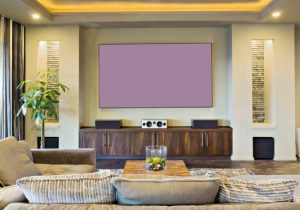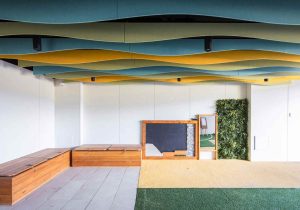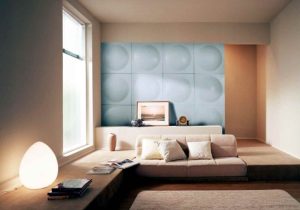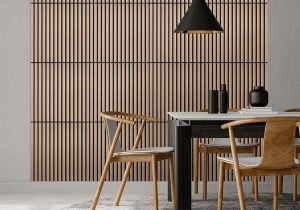Although acoustic design is sometimes disregarded, it is essential to establish a comfortable and useful atmosphere in residential interiors. Acoustic design is no different in the field of interior design when it comes to the need to strike a balance between functionality and aesthetics. The ambience of a home can be influenced by the deliberate integration of acoustic principles, which can reduce noise pollution and improve audio quality. We will examine the value of acoustic design in residential settings in this blog, as well as how it affects residents’ sensory experiences and general well-being.

First, it is crucial to understand that no solution is 100% insulating unless the objective is to construct an anechoic chamber. As a result, workable solutions are made to reduce outside noise rather than totally insulate the surroundings. Considering this, the first thing to do is to locate the source of the noise: is it coming from a neighbour, above or next door, or is it coming from the street and getting inside through the doors and windows? Every situation requires a different strategy.

A variety of techniques are used in acoustic design to regulate sound in each area. This entails taking isolation, diffusion, absorption, and reverberation into account. Designers can adjust a room’s acoustics to meet the needs of its users and their preferences by adjusting these factors. Finding the right balance between sound absorption and reflection is one of the main objectives of acoustic design in home environments. Excessive reflection can cause echoes and poor audio transmission quality, while too much absorption can make a room feel lifeless and boring. Careful planning and consideration of numerous architectural components, such as wall treatments, flooring materials, and furniture arrangement, are necessary to achieve the appropriate balance.

Achieving harmony between aesthetics and utility is crucial when incorporating acoustic design into home environments. While comfort and sound quality optimization are the main goals, it is also critical to make sure the design improves the room’s aesthetic appeal.
Using acoustic panels and treatments that also function as ornamental components is one way to achieve this balance. These panels can be made to match the current décor scheme and mix in well with the overall style of the design. Incorporate acoustic treatments into furniture or use them as wall art to improve a room’s acoustics and enhance its appearance. A further factor in striking a balance between practicality and beauty is material choice. Selecting aesthetically pleasing and acoustically efficient sound-absorbing materials and finishes can assist preserve the design’s integrity while improving the room’s overall sensory experience.

Acoustic design considerations in residential settings encompass not only traditional living spaces but also areas like home theatres, home offices, and bedrooms. For example, appropriate acoustic treatment is necessary in-home theatres to achieve the best possible audio performance. To achieve an immersive viewing experience, this may entail mounting sound-absorbing panels on the walls and ceiling to reduce reflections and echoes.
Similarly, regulating noise levels can have a significant impact on work performance in home offices where productivity and focus are crucial. Sound-absorbing materials and thoughtful positioning of acoustic panels can produce environments that promote focus and concentration. Acoustic design in bedrooms is essential for encouraging unwinding and sound sleep. Residents can benefit from a more tranquil and healing sleeping environment by lowering internal reverberation and external noise intrusion.

Acoustic design is an ever-evolving field, much like technology. New developments in audio technology and sound-absorbing materials are opening new avenues for household acoustic design. The incorporation of smart acoustic systems, which enable real-time sound level and acoustic property control, is one developing trend. Through the utilization of automation and artificial intelligence, homeowners may design customized soundscapes that align with their tastes and lifestyle. Sustainable acoustic design techniques that give priority to environmentally friendly materials and energy-efficient solutions are also gaining popularity. Designers are looking for solutions to decrease the negative environmental effects of acoustic design while optimizing its advantages. Examples include recycled acoustic panels and energy-efficient soundproofing systems.

Acoustic design influences the ambiance and functionality of residential areas. Designers may create rooms that are both visually beautiful and acoustically optimized by carefully addressing elements like sound absorption, reflection, and isolation. Successful acoustic design guarantees that the space not only appears nice but also functions well in terms of comfort and sound quality by striking a balance between aesthetics and utility. To achieve this equilibrium, there are a variety of options available, such as using sound-absorbing materials or adding attractive acoustic panels.
The field of domestic acoustic design has a bright future ahead of it as sustainability gains momentum and technology keeps developing. Designers may build beautiful, useful homes that are also environmentally conscious by embracing innovation and using eco-friendly strategies.